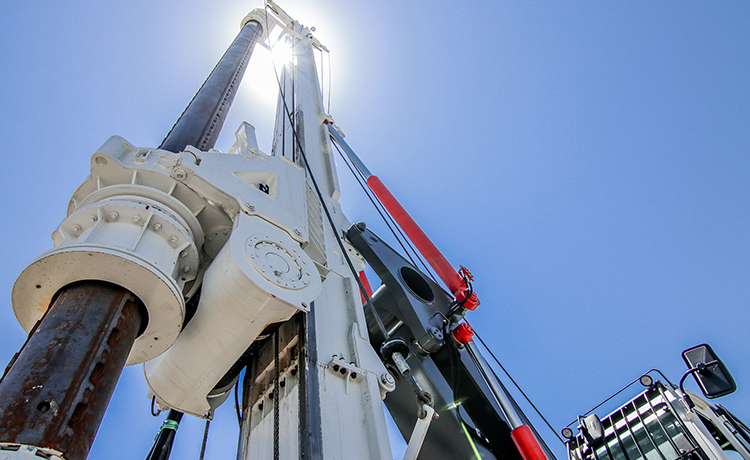The popular and planned practices observed in the creation industry in an effort to guarantee ideal outcome and income are regarded as fine practices in creation. These practices may be a coverage, procedure or a complete machine carried out at a given time frame.
The practices pleasant for one challenge received’t be very an awful lot beneficial for a distinct task. But in popular, there are commonplace practices that after executed with whole excellence will boost any production task. Looking returned, over a decade, the development activities have modified, new technology came up and the manner of challenge procurement and control too changed.
Importance of Following Best Practices in Construction
Among all financial system, the development enterprise is the most important and the essential zone in the organization that employs over 7% of the personnel. The countrywide funding valued from the construction industry is $300 billion. A have a look at by using BERL indicates that a 10% performance advantage in this sector effects in a 1% growth in GDP.
10 Best Business Practices in Construction
- Procurement
- Partnering
- Risk Management
- Value Management
- Benchmarking
- Supply Chain Management
- Whole Life Costing
- Health and Safety
- Lean Construction
- Sustainable Construction
1. Procurement
The procurement practice involves:
- Selecting Appropriate Method for Construction Management.
- Selection of Best team for the design.
- Selection of best team to deliver.
- Select best team to Operate the facility.
Contracting by focusing on lowest price tendering and lump sum contracts is a better practice.
Below diagram shows the process diagram for a Integrated Project Team (IPT). This is a project lifecycle that can be followed for any project. The procurement practice must follow the project life cycle.
2. Partnering
When compared to the traditional approach of working, the partnering is an different working style. This takes a collaborative approach in working.
It has been proved through great projects that working through partnering helps in achieveing.
- Greater value of money.
- Higher Profits for the company.
- Quality Improvement.
- Prediction of project completion.
The characteristics of partnering are:
- The pricing is open book procedure.
- The problem resolution is agreed.
- Work is carried out in terms of trust and cooperation.
- Continuous improvement is committed throughout the project.
- Have a set of mutual objectives.
Partnering is currently a great aspect in the construction industry.
3. Risk Management
This key practice takes into account time, cost and risk constraints, in order to meet the clients’s business needs. The method of value management will involve complete collaboration with the team. The team is in charge of design and delivery of the project. This team will also include the end-users and the stake holders.
The steps in value management are:
- Identify the need of client in terms of benefits and their priorities.
- Different options to satisfy the needs are identified and evaluated.
- Options assessed in terms of risk, cost, and satisfaction.
Value management is a systematic approach. This helps in generating different options to satisfy the requirements of the clients. Value management is practiced through the project life. In parallel the risk management is also followed.
At the end of every project, it is analysed and found how the value management helps in satisfying the requirements of the clients and the stakeholders.
5. Benchmarking
This method is practiced by comparing with other completed projects. The performance of different projects are compared each other. The lessons from each project is used to make best performances for new projects.
Benchmarking is a method that improves the performance of the project in a logical and systematic way. It determines the following question:
- Who performs better?
- Why they perform better?
- What action will improve the performance?
The practice of benchmarking will focus on the efforts on successful critical issues. The basis of comparison in the benchmarking process is based on the following criterias:
- Environment
- Time, cost, quality
- Safety and Productivity
- Profitability
- Construction Consultants
- M & E contractors
- Construction Products Industry
6. Supply Chain Management in Construction
In construction, this term is new. Here, all the operations of the organisations are integrated that is associated with the delivery of a product or a service. Hence, from the primary producer till the end user this is analyzed.
Supply chain management in construction will involve analyzing from:
- Material
- Suppliers
- Manufacturer
- Distributors
- Installation
- Contractors
- Designers
- Client organization
The supply chain management helps in providing prospect for achieving cost saving and the improvement of value. This will make the company to work effectively throughout the entire supply chain. Hence, supply chain management is now a central issue for many construction clients and companies. Two main practices necessary to make a supply chain work properly are Operation practices and Management practices.
The operational practices monitor, how materials are ordered and delivered to the site, selection of the trade contractors, their involvement in design and planning, methods to reduce invoice and transaction costs.
The Management practices will support collaborative methods, in order to support the working system. It enables systems to ensure proper accountability, support and incentives to the supply chain partners.
7. Whole Life Costing
The cost of ownership is measured of a building. This will take into consideration the sum of:
- Initial Capital Cost for making the building.
- Cost of maintenance of the building.
- Cost of servicing the building.
The cost of maintenance of the building is practically more when compared to the initial capital cost. This make the whole life costing an essential practice in construction. As per studies, for a building of capital cost £100 , the operational procedure will account for £500 over the life period of the building.
8. Health and Safety in Construction
The two main criteria while considering the health and safety in construction are that:
- The right of workers to be protected against risk and save their health.
- Effective planning and managing of the construction site to make it safe thus gaining productivity and profitability.
- The primary step in health and safety practice in construction is proper planning. The designing stage should also take into consideration that no health and safety issues are followed in the design.
The secondary is planning and scheduling. Thus the execution process are clearly understood and performed safely.
Finally to organize and control the works on the construction site. Along with we need to ensure that:
- Workers are properly trained and competent.
- Proper supervision with clear instructions are held.
- Right tools, equipment and safety clothings.
- Awareness about health and safety.
9. Lean Construction Practice
In this practice, after analyzing a approach, the process that adds cost is reduced or removed by keeping the process that will add value. Value is given more priority and cost. Thus, lean construction is a practice to manage the production activity.
The 5 main principles of lean construction are:
- The value from customer’s perspective is specified.
- Identification and integration of process that will deliver value.
- Produce the required when it is required.
- Earn perfection through continuous improvement.
- The value from customer’s perspective is specified.
- Value is allowed to flow avoiding bottlenecks and any disruption.
10. Sustainable Construction
Sustainable construction focuses to have social, economic and environmental performance of the industry. The practices focus on:
- Getting maximum profit that help to recognize the business.
- Deliver buildings with greater satisfaction, well-being and value
- Respect and fair treatment of the employees. Considering health and safety factors, welfare conditions etc.
- Protection and enhancement of the environment.
- Waste reduction and pollution during the construction process.
- Energy efficient buildings by taking energy from renewable resources.





